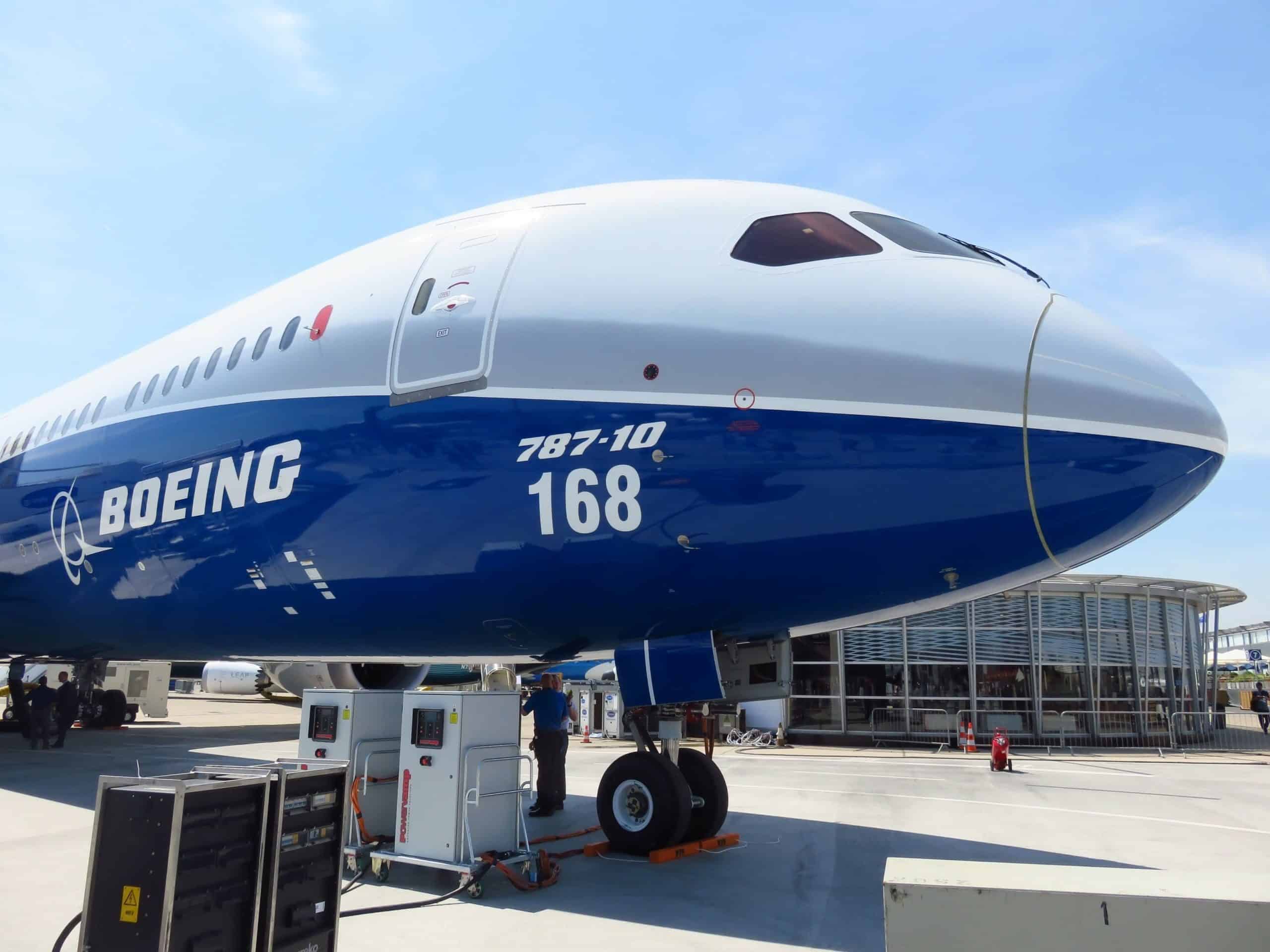Boeing is undergoing renewed scrutiny from regulators and airlines after a 19-foot cabin panel blew out of an Alaska Airlines Boeing 737 Max 9 mid-flight on January 5th. The explosive decompression forced pilots to make an emergency landing in Seattle with part of the aircraft fuselage missing.
Luckily, the panel fell off only a few minutes into Flight 1282 en route from Portland to California, long before it would have reached peak altitude, and there were no fatalities. If it fell off just 10-30 minutes later, the consequences may have been much more dire.
Nevertheless, quite a few passengers were injured by the loose debris and everyone on the plane had to suffer through an extraordinarily stressful ordeal.
The incident will likely be devastating to Boeing as it raises fresh questions about its quality control and safety oversight procedures for its jets. It may also delay the delivery of hundreds of 737 Max aircraft to Chinese carriers.
The blowout incident, which Alaska CEO Ben Minicucci described as “extremely sobering” occurred just weeks before Boeing expected clearance from Chinese regulators to restart the long-frozen Max deliveries. Years of diplomatic tensions contributed to delays in recertifying the best-selling narrow-body jet after two controversial overseas crashes led to its global grounding in 2019.
Boeing Hit With Major FAA Probe: Quality Control Under Scrutiny Yet Again
The Federal Aviation Administration (FAA) has launched a widespread investigation into the design and manufacturing of the 737 Max models involved following the devastating blowout failure. It will examine why the cabin panel dislodged at altitude despite meeting certification requirements prior to installation.
The probe focuses specifically on whether Boeing “failed to ensure completed products conformed to the approved design and were in a condition for safe operation in compliance with FAA regulations”, a statement from the agency reads. Findings from the ongoing investigation may expand its scope to other Max variants utilizing similar hardware.
In the wake of the incident, the FAA ordered U.S. carriers to ground all 737 Max 9 jets until they complete these targeted inspections of cabin doors and panels. Boeing says it is assisting Alaska, United Airlines, and other customers with inspecting the global fleet while working closely with regulators.
If the FAA finds significant problems with Boeing’s quality control or manufacturing, the company may have to spend billions of dollars fixing the problem and may even face large fees and lawsuits.
Carriers Are Forced to Cancel Dozens of Flights Amid Mandatory Groundings
Alaska Airlines reportedly operates around 65 Boeing 737 Max 9s at the time, which has resulted in dozens of flights per day facing cancellations due to the grounding order. Boeing has deployed rapid response teams to work with airlines to validate inspection processes so the jets can safely return to operation.
Also read: Emirates Places $52 Billion Order for Boeing 777xs at Dubai Airshow
However, the scrutiny around Boeing’s quality oversight system may lead to stricter control measures before deliveries fully resume. The FAA said that it is considering involving a third party to perform an independent audit on the aircraft manufacturer to ensure its practices comply with regulations.
The renewed inspection protocols and additional oversight will almost certainly further strain Boeing’s inventory of undelivered Max jets. Lingering questions around what allowed the panel blowout may also delay (or entirely prevent) Chinese clearance to accept its 85 grounded 737 Max planes despite the most recent bilateral negotiations.
China Southern Air May Delay Taking Max Jets
For years, Boeing jets have been caught in the political crossfire of diplomatic tensions between China and the U.S., which has resulted in a stalemate for the recertification of the Max models after crash-related groundings. However, the relationship between the two countries recently improved and expectations that deliveries would finally restart were growing.
China’s aviation regulator had been preparing to validate several undelivered jets across Chinese carriers, sources confirmed earlier this year, with the first batch bound for China Southern Airlines potentially as soon as this month.
However, following reports that China Southern will re-inspect aircraft cabins before accepting planes post-blowout, the long-awaited Max deliveries to Chinese customers appear to be set for further postponement.
Tarnished Reputation Adds Headwinds to Boeing’s Battered Finances
Beyond cascading logistical impacts, the Alaska Airlines emergency landing exacerbates Boeing’s tarnished safety reputation after multiple quality issues have emerged in recent years.
The twin crashes tragically exposed design shortcomings of the automated software controlling flights. Later, quality issues with other models like the Boeing 787 Dreamliner further eroded the public’s and regulator’s confidence despite the remediation efforts offered by the company headed by David Calhoun.
Also read: 70+ Booking.com Statistics You Need to Know in 2024
Investor wariness toward Boeing’s quality control and execution capabilities have already depressed its stock, with the price diving by more than 20% in the first few days of 2024 despite broader aerospace sector tailwinds. Each new failure hands more ammunition to critics with long-term implications for the firm’s production plans, order books, and deliveries.
Without full clarity yet around the root cause, analysts warn that the latest incident may result in future certification discussions and create complications that Boeing can hardly afford. Its goal to ramp up monthly 737 productions to record levels looks more susceptible than ever to delays as inspectors swarm its Renton, Washington factory amid this renewed wave of scrutiny.
Boeing Appoints Safety Advisor, Enhances Oversight Procedures
In response to rising pressure, Boeing moved to enhance oversight while pledging transparent cooperation with active investigations.
The company announced today the appointment of Admiral Kirkland Donald, former chief of the Navy’s nuclear propulsion branch, as a special safety and quality assurance advisor reporting directly to the company’s board.

Donald brings extensive quality control expertise gained from years of managing complex defense systems. He will provide independent assessments of Boeing’s end-to-end production oversight and internal controls.
The company further announced expanded checks at supplier Spirit AeroSystem’s facilities where the blown-out fuselage panel underwent fabrication and installation. Airlines can now independently audit that process. Alaska Airlines sent its own teams to perform a supplemental inspection.
Stan Deal, the CEO of Boeing’s commercial airplane unit, also committed to holding employee safety meetings and initiating third-party quality management reviews in a memo acknowledging the urgent need to improve. These steps seek to reinforce safety guardrails and accountability amid signs previous interventions failed to resolve systemic deficits.
“These checks will provide one more layer of scrutiny on top of the thousands of inspections performed today”, Deal stated.
His willingness to take corrective actions — while opening factories to airline scrutiny — aims to reassure customers, regulators, and the public that Boeing is aware of the gravity of the issues that have unfolded lately and their implications to its reputation and the safety of its aircraft. Ongoing transparency around the investigation’s findings will be essential to rebuilding trust following this flood of incidents.
FAA Will Prioritize Safety Over Commercial Interests in its Investigation
In a January 12 press release addressing the grounding of Boeing’s 737-9 Max, the Federal Aviation Administration (FAA) informed the public that it will be working alongside the aircraft manufacturer to conduct thorough safety checks on the model before it is cleared to fly once again.
The agency said that around 171 737-9 Max planes were grounded on January 6 and that an initial round of 40 inspections are being performed at the time.
Also read: US & Taiwan in Talks on China AI Chip Ban as TSMC Braces for Impact
“Our only concern is the safety of American travelers and the Boeing 737-9 MAX will not return to the skies until we are entirely satisfied it is safe”, the press release stated.
“The safety of the flying public, not speed, will determine the timeline for returning the Boeing 737-9 MAX to service”, the regulatory agency emphasized.
Analysts Warn of “Whole New Can of Worms” Being Opened: Is Boeing Dead in the Water?
In effect, Boeing now stares down at an unplanned top-to-bottom review of its entire quality management ecosystem. Wells Fargo analysts cautioned that audit findings that demand no enhancements appear “unlikely” given Boeings recent history of devastating failures. Their notes came in a report titled “FAA audit opens up a whole new can of worms”.
Any material issues that emerge may force revisions to production procedures, supplier contracts, and even Boeing’s organizational structure. If cultural factors enabled the blowout vulnerability to persist unaddressed, more foundational reforms could follow.
With over a dozen safety incidents recorded across Boeing models since 2018, regulators have enough incentives to extract concessions rather than rubber stamp current controls. Their assessment might shape how Boeing approaches manufacturing for years as it works to restore the public’s hard-earned trust.
While some analysts argue that there is a decent chance that Boeing will be irreparably harmed by this (and its previous) plane malfunctions, others believe that it will be able to recover before too long. This depends on the severity of the problem and Boeing’s capability to fix it but if it moves quickly and decisively, it will likely recover well over the next year and beyond.
Pathway to Chinese Deliveries Remains Cloudy
As new findings come out of these inspections, analysts believe that China will take an abundantly cautious approach to clearing 737 Max delivery backlogs. Confirming that the jets meet the country’s stringent safety requirements after another headline failure will probably become even more imperative for authorities.
While Beijing wishes to give trade relations some room for progress, domestic political pressures limit flexibility around reintroducing these scarred jets without assuring that they are truly airworthy. This would put diplomatic priorities in second place to the technical validation required to restore credibility in the eyes of passengers.
Any actions that agitate the public’s skepticism of the Max’s flight capabilities may prompt consumer backlash given past symbolism as a flashpoint for U.S.-China technological tensions.
